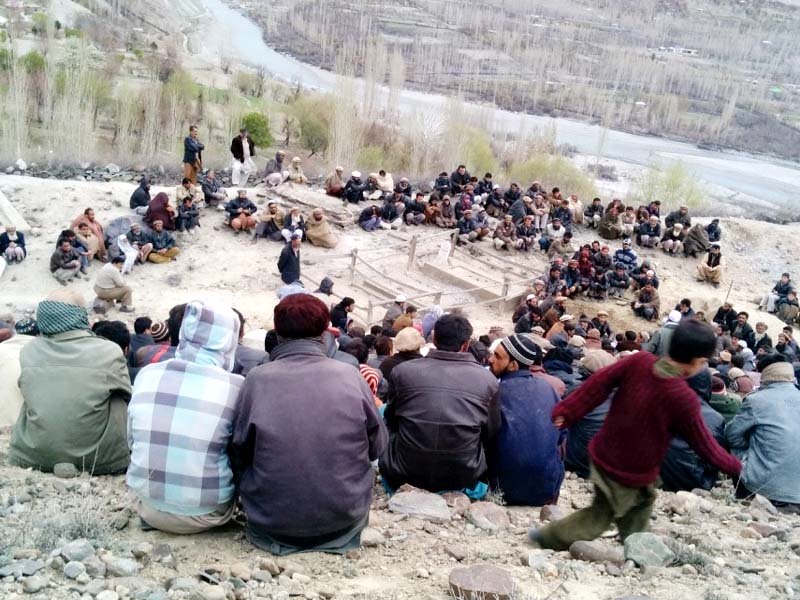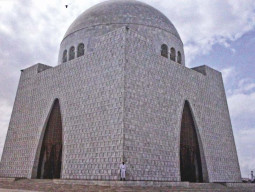
With donkeys and horses the only mode of transportation, the six-kilometre track leading from the scenic Ghizer Valley to Mayoon village is straight out of the medieval era. However, the year is 2015 and the troubles faced by people from the virtually disconnected village are in line with the current day.
There are mouths to be fed, children to be educated and diseases that need treatment – all of which can only be done on the other side of the manmade track. Apart from horses, donkeys and people on foot, only four-wheel drive vehicles can cross the route to reach Ghizer Valley – whether they are affordable for underprivileged families of Mayoon is another matter altogether.
For those fortunate enough, the road itself can rattle the most capable of drivers and patient of passengers—both literally and figuratively.
The village was far more accessible up till 2010 when a passable road would link Mayoon to the rest of the world through a bridge. However, the devastating floods of 2010 destroyed most of the region’s infrastructure. Over 300 small and large bridges were swept away and road networks damaged.
The Mayoon Bridge was among the casualties and without realising it so were the villagers. With necessity leading to invention, locals built a replacement route to reconnect with the outside world which can only be travelled on foot, horseback or jeep.
“This is where we live,” says Niyat Khan, a local. “Nobody knows what life in this village is about. We carry flour bags and other edibles on our backs to bring them home. Our children have to travel for miles on foot to get an education,” the native adds. “It is all about self-sufficiency.”
In 2013, the relevant authorities built a bridge which can only be traversed on foot. “While the bridge is not for vehicles, it has brought some relief for us,” says Tahir Khan, another resident.
The rocky road
Should a family member fall ill or pass away outside the village, locals have to carry the person on their shoulders along the rocky six-kilometre route before shifting them to a vehicle.
The nearest government hospital at Ishkoman in Ghizer district is small and can only administer first-aid to patients. The area itself has a population of 100,000 people.
Ejaz Wali knows only too well of the ordeal he faced when his relative Aziz had to be taken to Islamabad for the treatment of blood cancer. Only 36, the patient’s condition was untreatable anywhere in Gilgit-Baltistan, let alone Ishkoman.
After a weeklong treatment in Gilgit, doctors referred him to Islamabad. However, by then the disease had spread beyond control.
“Aziz eventually succumbed to cancer,” Wali adds, “It’s a loss we have been unable to account for.”
He was among those who accompanied Aziz throughout his journey from his village. “It took us four hours from the village to Gilgit and a further 20 hours onto Islamabad by road,” he recalls. “It all culminated in death.”
With Aziz being the only breadwinner, the financial position of the family was not strong to begin with. Now, after his illness and subsequent demise, his family has its back to the wall.
“We don’t know what to do now. He was our only support and now he is no more,” says Aziz’s elderly father.
The district itself
Ghizer district is in the extreme north of the country. It joins with the Wakhan strip on its north-west and China on its northern borders. On the west, there is Chitral and on the east is Gilgit. G-B’s Diamer district falls to the south.
Ghakuch is the capital of the district and has some breathtaking lakes and passes. The valley is a multi-ethnic district and three major languages are spoken – Shina, Lhowar and Burushaski. There are also Wakhi speakers in the valley which happens to be underdeveloped despite a high literacy rate – especially among women.
Here’s hoping
Nawaz Khan Naji, a lawmaker from the area, is disgruntled with the performance of the previous Pakistan Peoples Party-led government even though he was a part of it. “Development funds were misused and we couldn’t do anything for our people,” he says.
Locals from these areas are undoubtedly hoping the next chief minister of G-B, Hafeezur Rahman, will keep his promises of improving road networks and the quality of health care and education.
Published in The Express Tribune, June 24th, 2015.







































COMMENTS
Comments are moderated and generally will be posted if they are on-topic and not abusive.
For more information, please see our Comments FAQ